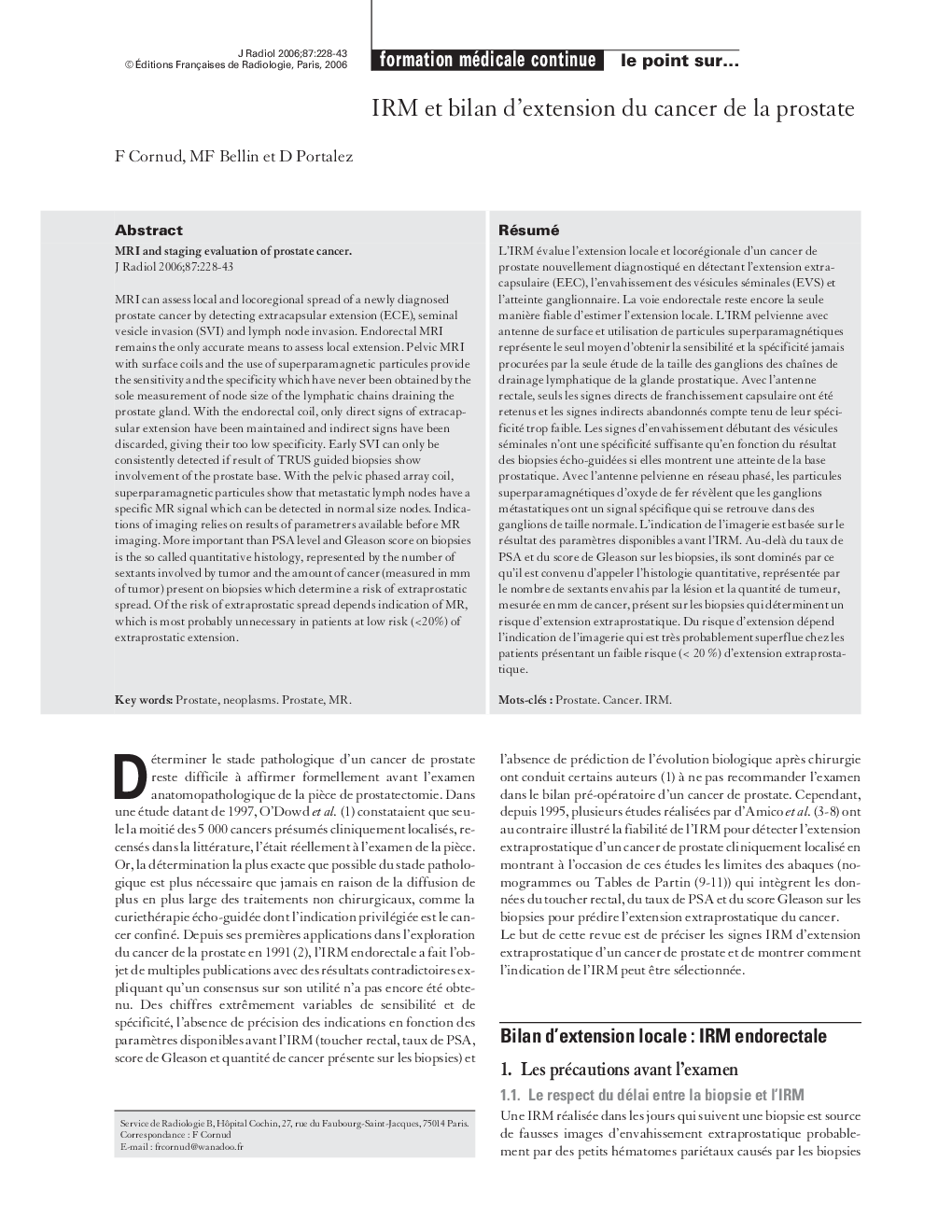| Article ID | Journal | Published Year | Pages | File Type |
|---|---|---|---|---|
| 4236670 | Journal de Radiologie | 2006 | 14 Pages |
Abstract
MRI can assess local and locoregional spread of a newly diagnosed prostate cancer by detecting extracapsular extension (ECE), seminal vesicle invasion (SVI) and lymph node invasion. Endorectal MRI remains the only accurate means to assess local extension. Pelvic MRI with surface coils and the use of superparamagnetic particules provide the sensitivity and the specificity which have never been obtained by the sole measurement of node size of the lymphatic chains draining the prostate gland. With the endorectal coil, only direct signs of extracapsular extension have been maintained and indirect signs have been discarded, giving their too low specificity. Early SVI can only be consistently detected if result of TRUS guided biopsies show involvement of the prostate base. With the pelvic phased array coil, superparamagnetic particules show that metastatic lymph nodes have a specific MR signal which can be detected in normal size nodes. Indications of imaging relies on results of parametrers available before MR imaging. More important than PSA level and Gleason score on biopsies is the so called quantitative histology, represented by the number of sextants involved by tumor and the amount of cancer (measured in mm of tumor) present on biopsies which determine a risk of extraprostatic spread. Of the risk of extraprostatic spread depends indication of MR, which is most probably unnecessary in patients at low risk (<20%) of extraprostatic extension.
Related Topics
Health Sciences
Medicine and Dentistry
Radiology and Imaging
Authors
F. Cornud, M.F. Bellin, D. Portalez,
